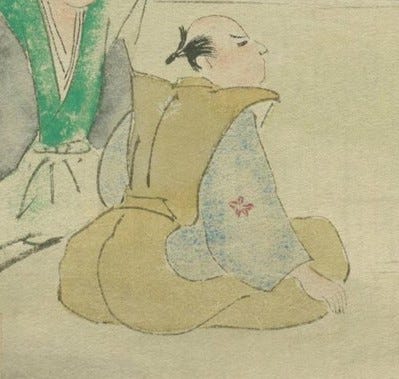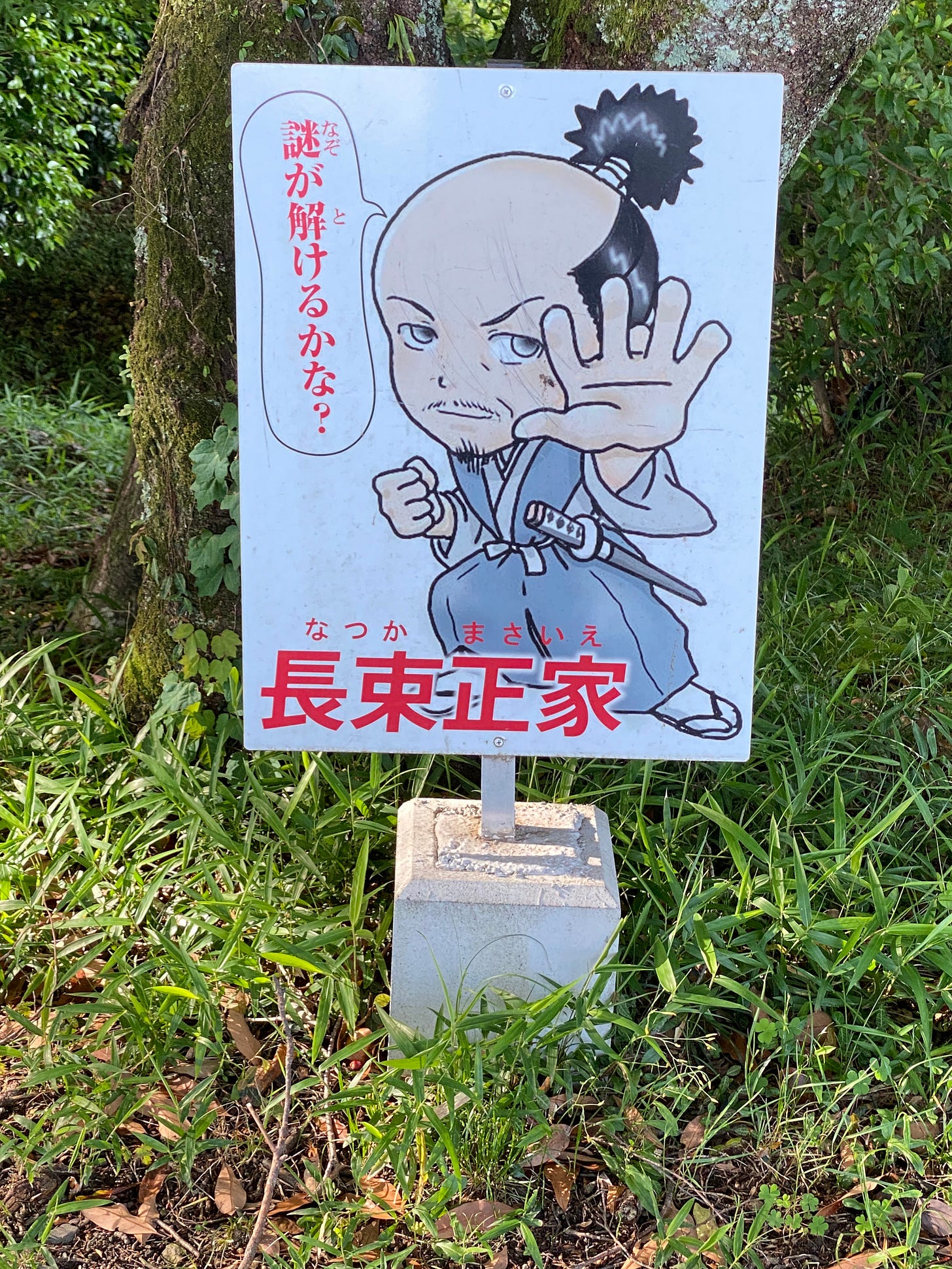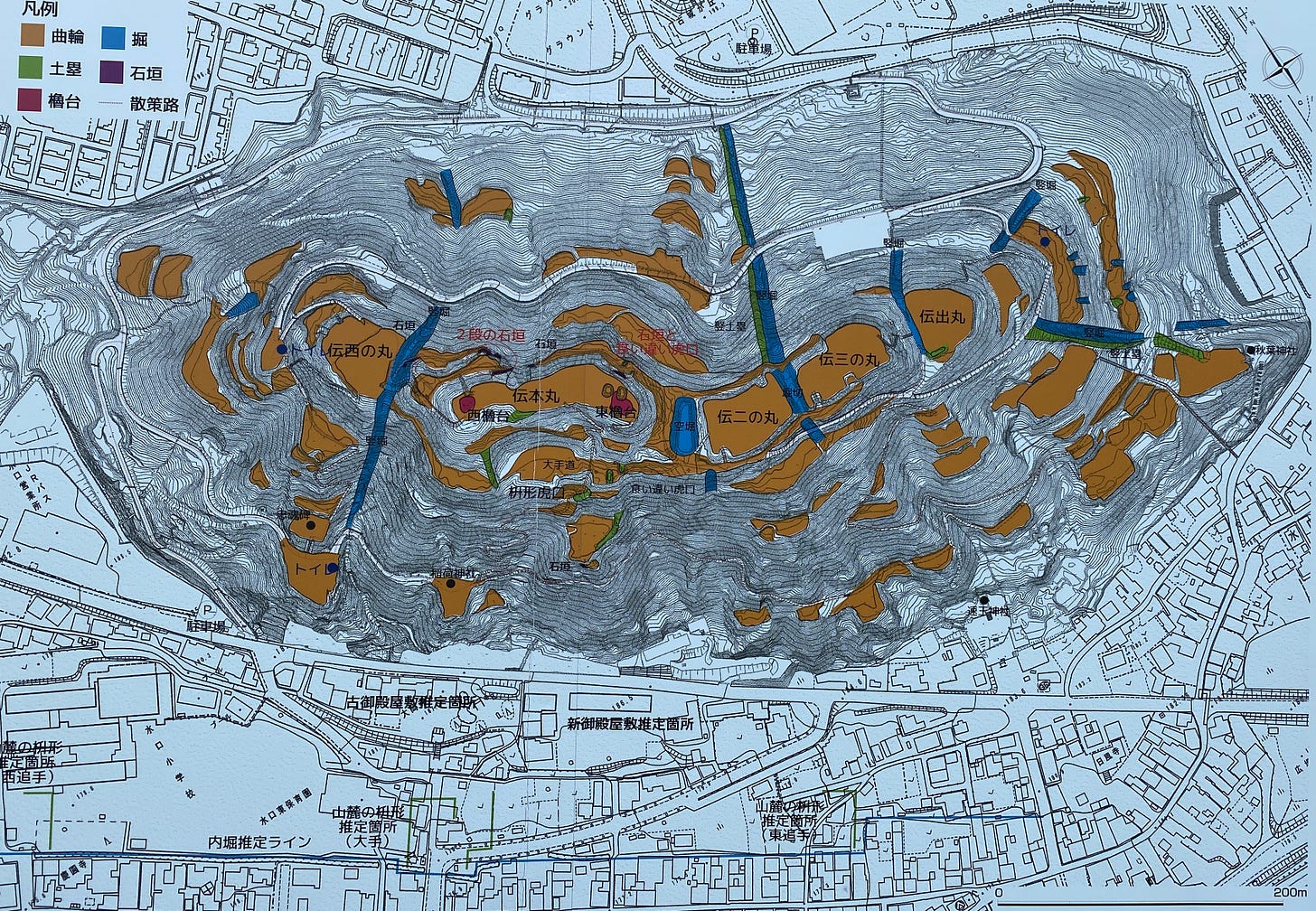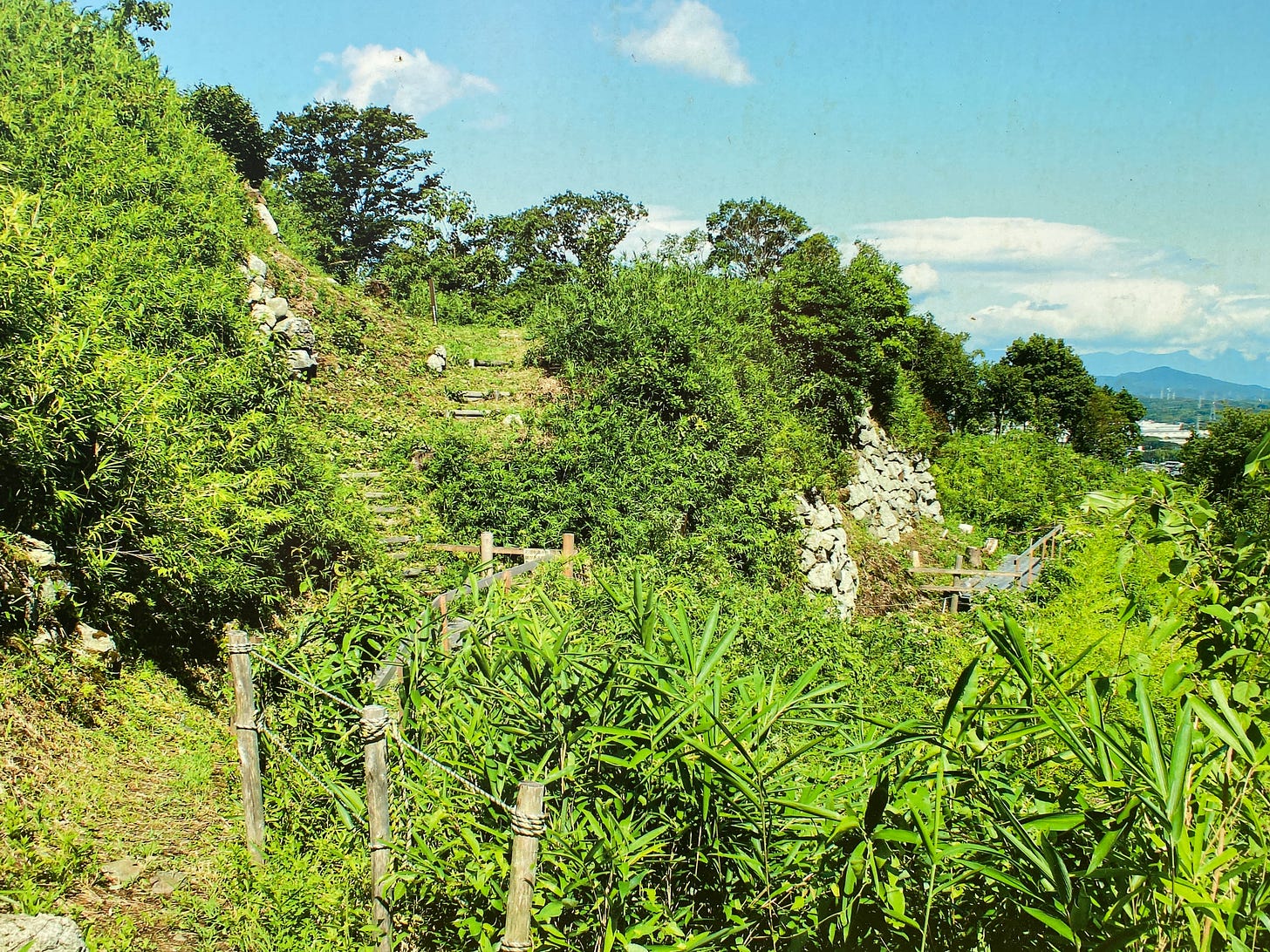Believed to have been born in 1562 in Inazawa City, Owari Province (Aichi Pref.), Natsuka ( also known as Nagatsuka) Masaie served Niwa Nagahide, a commander under Oda Nobunaga and later, following Nobunaga’s death in the Honno-ji Incident, the Niwa clan allied themselves with Toyotomi Hideyoshi. As such, the Niwa and as a result, Natsuka Masaie saw action in the siege of Takamatsu, and immediately after, the Battle of Yamazaki against Akechi Mitsuhide in the wake of the attack on the Honnoji, and the 1583 Battle of Shizugatake, which saw the former Oda clan generals Toyotomi Hideyoshi and Shibata Katsuie clash over Oda loyalties.
Secret Weapon
Three years later, when Niwa Nagahide — whom Nagatsuka Masaie served —died, a major problem arose. Toyotomi Hideyoshi inexplicably reduced the income and landholdings of the Niwa clan, and on top of this, then accused them of financial misappropriation.
It was the loyal Natsuka Masaie who came to the forefront with a secret weapon he used to prove that the Niwa were innocent of any wrongdoing. That secret weapon was a ledger. The diligent Natsuka had meticulously maintained a record of accounts, tabs of statements and reciepts he offered as evidence of the clans’ financial dealings, thus protecting the integrity of the Niwa clan.
On being presented with the proof, and seeing how well Natsuka Masaie conducted himself in the face of the accusations, Hideyoshi realized that he was good with numbers and also showed great loyalty to his late master and clan. For this reason he made Masaie his direct retainer.
Natsuka Masaie’s strong arithmetic skills were then put to use as Hideyoshi made him responsible for the Toyotomi administrations’ finances and managing the Toyotomi clan's treasury, and later in conducting the Taiko land survey in which Hideyoshi ordered the realm be surveyed for (basically) rice production and taxation purposes.
Masaie steadily advanced in his career as a vassal of Hideyoshi, becoming a daimyo and then being appointed to one of the Go-Bugyo, the Five Commissioners, an important position in charge of the practical aspects of the Toyotomi government.
During the subjugation of Kyushu in 1586 and the Odawara Campaign in 1590, he played an active role as the logistical supply magistrate, transporting some 200,000 koku of military supplies without a single mishap or loss, and purchasing up to 30,000 koku of rice in the Odawara area, and therefore preventing supplies getting into Odawara Castle. In the battles for the smaller surrounding castles, his retainers, including Usuki Heishiro, Ichinomiya Zenbei, Arisaka Miyauchi, and Masuda Shinjiro, distinguished themselves in the siege of Oshi Castle. After the siege, his younger brother and retainer Masataka, was also appointed a direct retainer of Hideyoshi. During this time, he had married Honda Tadakatsu's younger sister, Eiko in 1586, and in 1589, his eldest son Han'emon Sukenobu was born. He also had a close relationship with the Tokugawa clan, and in January of 1590, he was put in charge of welcoming Tokugawa Hidetada, who had been sent to Kyoto as a hostage of the Toyotomi.
Natsuka Masaie was also involved in governing rural areas, and in February 1594, after consulting with Toyotomi Hideyoshi’s nephew, Hidetsugu, he asked for the cooperation of neighboring Treasury District Magistrate Ota Kazuyoshi when Nakagawa Hidenari entered Bungo Province, and instructed him on the reconstruction of rural areas that had been devastated by war, and on the return of farmers who had fled. During the same period, he also participated in the construction of Fushimi Castle.
In 1595, Masaie was bestowed with 50,000 koku of rice and Minakuchi Castle in Omi Province, (Shiga Prefecture) and was ranked as one of the lowest ranking magistrates. In 1597, his stipend was increased to 120,000 koku, and he was promoted to the rank of Junior Chamberlain. Within his domain, he provided protection for Jokei-ji Temple, which later became Iematsuyama Daitoku-ji Temple, and through this connection, his surviving son was later welcomed into the temple and became the third head priest, Kanyokeikan. When Gamo Hideyuki had his lands and income reduced in size, Masaie employed the former Gamo ronin including Matsuda Hidenobu, strengthening his forces considerably.



During the Bunroku-Keicho Korean Invasion, he was stationed in Hizen Nagoya, and again served as the magistrate of military provisions. He was also appointed by Toyotomi Hideyoshi as one of his five commissioners along with Ishida Mitsunari in the Korean Campaign.
Following Hideyoshi's passing in 1598 he sided with Ishida Mitsunari and participated in a conspiracy to overthrow Ieyasu, but was unable to prevent Ieyasu from entering Fushimi Castle. Together with Maeda Gen'i, he pleaded directly with Ieyasu to stop the Aizu campaign, but his plea was not accepted. Not long after, rumors spread that his son and his retainers were plotting to assassinate Ieyasu at Minakuchi as the future Shogun was heading to the Aizu campaign, and that Ieyasu passed through the castle town without a trace after being informed by Koka shinobi ( ninja) leader Sasayama Kageharu.
At the onset of hostilities between those loyal to the Toyotomi and those choosing to follow the Tokugawa, Natsuka Masaie quickly proclaimed his support of the Ishida Mitsunari led Toyotomi Loyalist forces.
At the Battle of Sekigahara in late October of 1600, Natsuka Masaie raised an army of 1,500 and joined the other 27,600 troops of the Mouri clan allies including Mouri Hidemoto, Chosokabe Morichika, Ankokuji Ekei under the command of Kikawa Hiroie high on the eastern slopes of Mt. Nangu overlooking the Nobi Plains. They had believed that any battle would take place on the wide Nobi Plains between Mt. Nangu and Ogaki Castle, where the rest of the Western Forces had been trapped.

Just before the battle commenced, the Natsuka troops fought a small skirmish with the Asano samurai near Nangu Taisha Shrine, and engaged in a gun battle with Ikeda Terumasa's troops. However, Natsuka Masaie’s forces would not see any more action that day, as Kikkawa Hiroie was secretly in communications with the enemy Tokugawa Ieyasu! In an effort to protect his masters, the Mouri clan, Kikkawa had made a promise with the Tokugawa not to move against them when the battle broke out, on the proviso that the Mouri clan would retain their lands and prestige afterwards. Ieyasu had agreed.
Prevented from entering the actual battle of Sekigahara by Kikkawa Hiroie, Natsuka would spend the day frustrated by the lack of action on the upper slopes of Mt. Nangu, directly east of the battlefield. Upon completion of the slaughter at Sekigahara, along with the other Western force armies on Mt. Nangu, he fled to his fief in Minakuchi.
Having fled the battlefield, he was attacked by Yamaoka troops just before Mizuguchi Castle and defeated. Thanks to the efforts of Matsuda Hidenobu, Masaie succeeded in entering the castle, but after being promised security of his self and territory by Kamei Tsunenori and Ikeda Nagayoshi, deceived and captured when he left the castle. Seventeen days after the Battle of Sekigahara surrounded by the Ikeda troops, set fire to the castle, and committed seppuku, aged 39 on November 8th, 1600, assisted by their retainer Okumura Samasuke as kaishakunin. Six of Masaie’s senior retainers were also forced to commit seppuku at Hino in Omi on the same day. His head was taken and displayed at Sanjo Bridge in Kyoto.
Natsuka Masaie was an intelligent, loyal, righteous, brave and powerful military commander, one of the lesser known heroes of the Sengoku period.






Awesome articule (as usual!) Thank you for share!